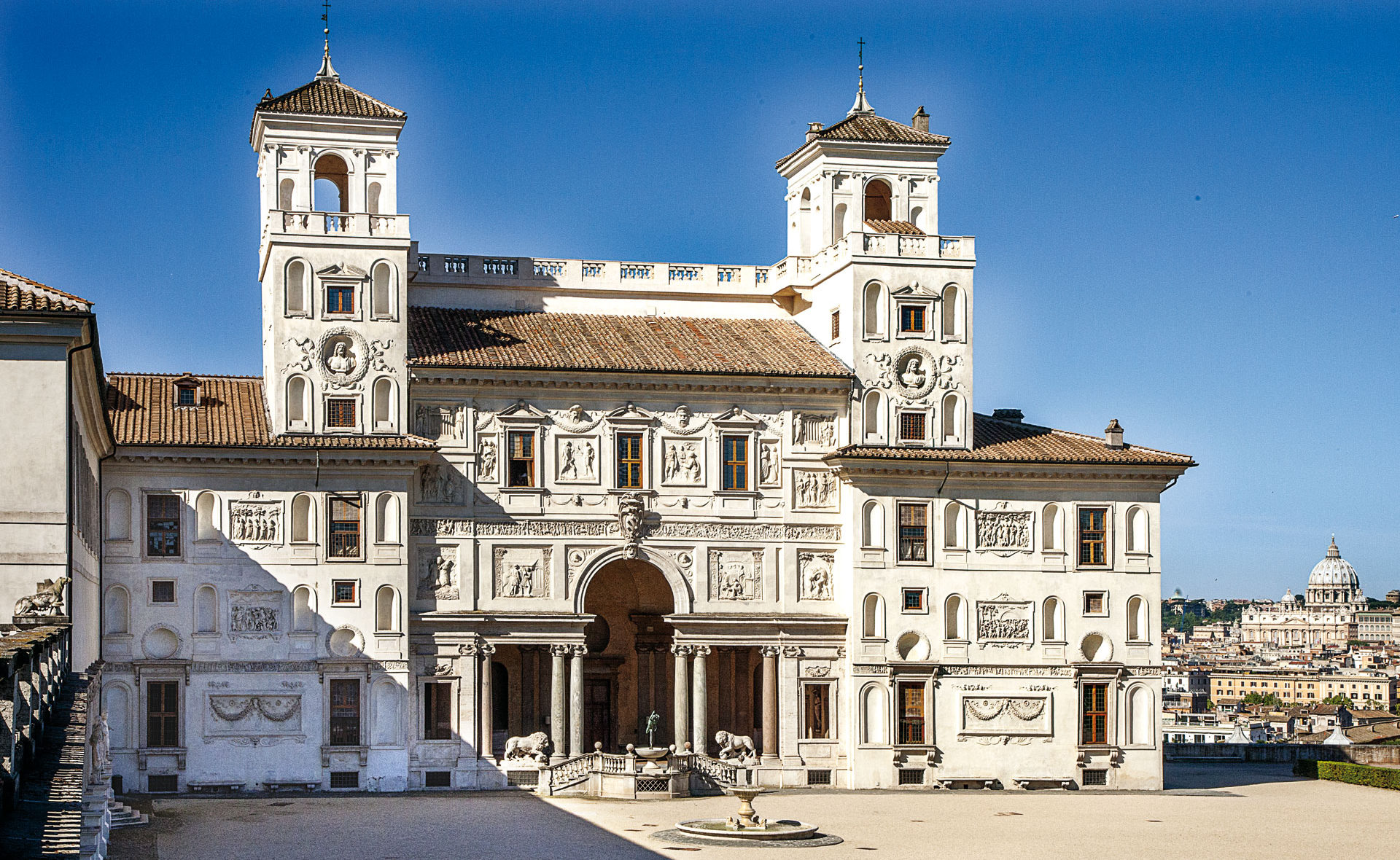Home to the l’Accademia di Francia a Roma, it is immersed in one of the most beautiful urban scenic parks.

V illa Medici, one of the Renaissance jewels of Rome, stands on the Pincio hill, next to Trinità dei Monti. In 1576, Cardinal Ferdinando de’ Medici bought the estate and commissioned the construction of his residence to the Florentine architect Bartolomeo Ammannati.
The external façade of the villa, enclosed by two side turrets, offers an austere appearance befitting the residence of an ecclesiastic under Counter-Reformation mandates. Impressive as it is, the building has kept its original bronze doors. One historical note: as legend would have it, the dents on the portal attest to the cannon ball fired from Castel Sant’Angelo by Queen Christina of Sweden in 1656. Following this episode, Annibale Lippi created the so-called Fountain of Cannon Bale, opposite the entrance.
Past the villa’s doorway, we reach the vestibule, where a large staircase leads to the main floor through two further spiral staircases. As we reach the Medici Lions, which takes its name from two marble lions placed between the onion marble and Egyptian granite columns, we come to admire the fountain of Flying Mercurio, a copy of Giambologna’s Mercury. From here, we descend into the garden, the sheer size of which still delivers (7 hectares) an astonishing scenic effect. At its very centre sits a copy of the Medici Obelisk, conserved in the Boboli Gardens of Florence. On the Aurelian Walls stands a small pavilion, commissioned by Ferdinando de’ Medici, and frescoed by Jacopo Zucchi, a disciple of Vasari. The Bird Room is the largest one, and is so called because it depicts an immense aviary, with many varieties of birds and greenery. Next to this building, there is a loggia with a headless female statue in the middle.
In 1650, during his stay in Rome, the Spanish painter Diego Velázquez was enthralled by this architecture, which he immortalised in a painting now preserved in Madrid’s Prado Museum.
Since 1803, Villa Medici is the seat of the “Accademia di Francia a Roma”. It is indeed here that the winners of the Prix de Rome were hosted to study ancient and Renaissance art. Nowadays, the Accademia still hosts scholars of all nationalities.
For further information on timetables and guided tours, please visit www.villamedici.it.
